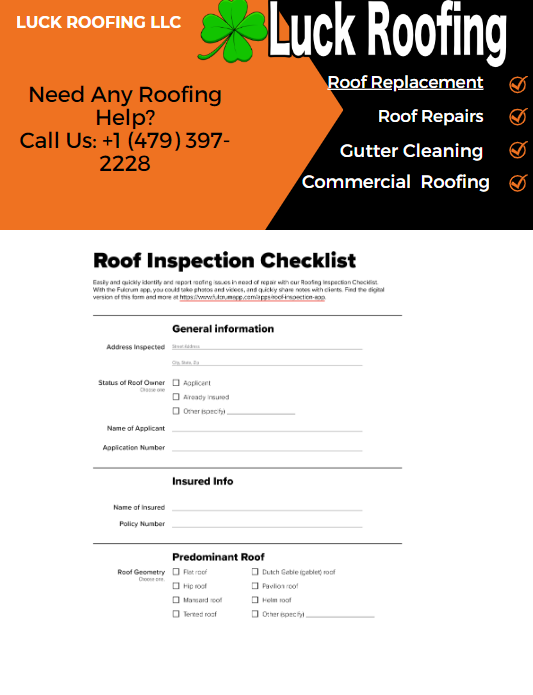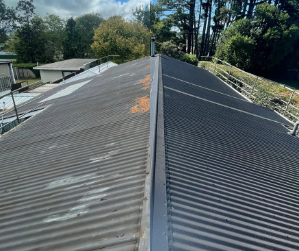Comprehensive Guide to Commercial Roof Inspection: Ensuring Longevity and Efficiency

In the intricate landscape of commercial building maintenance, the significance of roof condition is often underestimated. A well-structured and detailed commercial roof inspection checklist is indispensable, ensuring a systematic examination of various components and aiding in the longevity and efficiency of the roof. This guide delves into the nuances of an effective inspection, highlighting its critical role in preserving the integrity of your commercial roofing.
Key Insights into Commercial Roof Inspections
Regular commercial roof inspections are essential for reducing facility costs and minimizing the need for expensive emergency repairs. These inspections, when conducted methodically, can significantly extend the roof’s lifespan and maintain the building’s structural integrity.
Understanding Commercial Roof Inspections
 Commercial roof inspections are comprehensive evaluations aimed at identifying potential issues and ensuring the roof’s optimal performance. These assessments, typically conducted by professional inspectors, involve:
Commercial roof inspections are comprehensive evaluations aimed at identifying potential issues and ensuring the roof’s optimal performance. These assessments, typically conducted by professional inspectors, involve:
- Visual Examination: Walking the roof to check for visible damage, such as cracks or blisters.
- Infrared Imaging: Detecting hidden moisture and insulation issues.
- Core Sampling: Assessing the roof’s composition and overall condition.
- Penetration Inspection: Ensuring proper sealing around roof penetrations.
Regular inspections, ideally bi-annual and post-weather events, are crucial in early problem detection and maintenance, thereby extending the roof’s lifespan.
Essential Roof Inspection Tools
A professional roof inspector’s toolkit is crucial for an accurate assessment. Key tools include:
- Sturdy Ladder: For safe roof access.
- Reliable Flashlight: For inspecting poorly lit areas.
- Binoculars: For distant evaluation of larger roofs.
- Tape Measure: For precise measurements.
- Moisture Meter: To identify water intrusion and potential leaks.
Roof Surface Examination Process
The roof surface examination is a critical component of the inspection. It involves:
- Visual Inspection: Identifying signs of wear, cracks, and water ingress.
- Flashings and Sealants Check: Examining these areas for leaks.
- Specialized Tools Usage: Employing moisture meters or infrared cameras for a detailed inspection.
Importance of Flashing Inspection
Flashing inspection is vital in preventing water infiltration and costly structural repairs. Inspectors meticulously examine the flashing to ensure it’s secure and functioning correctly, thus preventing accelerated roof decay and increased water infiltration.
Identifying Drainage Issues
Proper drainage is essential for roof integrity. Inspectors assess for ponding water, examine gutters and downspouts, and look for interior water damage signs. Early identification of drainage issues can prevent extensive water damage.
Inspecting Rooftop Equipment
Inspectors thoroughly examine rooftop equipment, such as HVAC units, ventilation systems, and satellite dishes, for wear, damage, or improper installation. This step is crucial as issues with rooftop equipment can lead to significant roof damage. Check our Commercial roof installation cost guide to complement rooftop inspection process.
Potential Roof Damage Indicators
Inspectors look for indicators of roof damage, including water stains, leaks, cracked or missing shingles, sagging areas, and damaged flashing. Recognizing these signs early allows for prompt maintenance and inspection, averting extensive damage and costly repairs.
Professional Vs. DIY Inspections
Choosing between professional and DIY roof inspections depends on the complexity of the roof system, potential damage
extent, and the individual’s technical knowledge. Professional inspections offer a thorough assessment by experienced roof contractors, identifying subtle issues that may be overlooked in DIY inspections. While DIY inspections are useful for routine monitoring, they may miss subtle signs of damage, potentially leading to significant problems.
Professionals possess the expertise to conduct a comprehensive evaluation, ensuring all aspects of the roof are examined systematically. They use advanced tools and techniques to detect underlying issues, providing a detailed report on the roof’s condition. This level of thoroughness is often beyond the scope of DIY inspections.
Final Thoughts on Roof Inspections
Regular roof inspections are a strategic tool in commercial facility management. They play a crucial role in preventing major issues, ensuring the roof’s longevity, and reducing the need for costly emergency repairs. A well-implemented roof inspection checklist guides the inspection process, ensuring all aspects of the roof are examined for potential problems.
Post-event inspections, especially after severe weather, are vital for assessing induced damage. Timely detection and repairs, facilitated by these inspections, can significantly reduce maintenance costs. Regular inspections, conducted by professionals, are an investment in the roof’s longevity, ultimately saving money in the long run.
Frequently Asked Questions
How Do You Inspect a Roof? Inspecting a roof involves a detailed examination of its overall condition, including checking for visible damage, assessing roofing material, examining flashings and sealants, evaluating the drainage system, and assessing rooftop equipment. This thorough inspection helps identify potential issues early, enabling timely repairs or maintenance.
What Are the Methods of Roof Inspection? Roof inspection methods include visual examination, infrared imaging for hidden moisture, core sampling for roof composition assessment, and penetration inspection for proper sealing. These methods ensure a comprehensive assessment, leading to early problem detection and maintenance, thus prolonging the roof’s lifespan.
In conclusion, a comprehensive commercial roof inspection checklist is a vital tool in maintaining the health and durability of commercial roofs. It facilitates systematic evaluation, early problem detection, and significant cost savings. Understanding the inspection process and employing professional services when necessary are key to ensuring the longevity and efficiency of your commercial roofing system.
Michael Overzat
Michael Overzat resides in Fort Smith, Arkansas with his wife and three kids. He enjoys to hike, skateboard, write, and get involved in charity organizations. He was originally born in Maryland. He has worked within the roofing industry for 5 years and is very active within the industry by attending conferences, masterminds, etc. His vision is to create a multi-state organization that has a customer centric model. He's worked for some of the biggest names in the industry and hopes to create a more people focused model for the roof replacement process.
